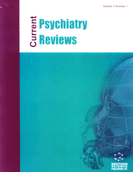Abstract
Background: All antipsychotic agents marketed since clozapine have been categorized as “atypical”, without regard for the true definition of “atypicality”. The standard practice of designating every new agent as “atypical” not only ignores the definition, but conveys a false sense of safety for the majority of these medications when considering the risks of movement disorders, both acute and latent. Though receptor profiles are unique to each medication, the antipsychotic effect of all agents is attributed to reducing dopamine activity in the mesolimbic area, usually through the blockade of dopamine type 2 (D2) receptors, whether the agent is “tightly” or “transiently bound”. Yet, antagonism of D2 receptors in the striatum is associated with the potential for extrapyramidal symptoms (EPS), as well as the development of tardive dyskinesia (TD). Clozapine is categorized as “atypical” because its use is not associated with EPS or TD at a rate greater than placebo, as it provides antipsychotic efficacy at a lower saturation of D2 receptors than traditional antipsychotics. As newer second-generation agents came to market, the definition of “atypical” has been modified to include a variety of characteristics unrelated to movement side effects. Nevertheless, many clinicians still assume that “atypicality” indicates a risk of EPS and TD at no-greater-than-placebo rates.
Objective: This paper examines each of the 10 second-generation agents approved in the United States for treatment of schizophrenia (and cariprazine, for which approval is pending), and examines which ones meet the strict definition of “atypical” (ie, risk of EPS and TD no greater than placebo).
Data source: A literature search using PubMed and Google Scholar, involving various combinations of the keywords “antipsychotic,” “atypical,” “typical,” “first generation,” “second generation,” “schizophrenia,” “tardive dyskinesia,” “movement disorders,” and “extrapyramidal symptoms,” in addition to the 11 agents by chemical name, yielded a vast set of clinical trials, systematic reviews, case reports, and receptor-profile studies. These articles and reports were narrowed to the appended reference list, based on the report’s/trial’s contribution to the discussion of “atypicality.”
Results/Conclusions: Of the 10 second-generation agents currently in use, and the one awaiting approval, only clozapine, quetiapine, and iloperidone meet the criteria necessary for the designation of “atypical” (ie, rates of EPS and TD no greater than placebo).
Keywords: Antipsychotics, atypical, extrapyramidal symptoms, tardive dyskinesia, review, second-generation antipsychotics and schizophrenia.
 20
20



